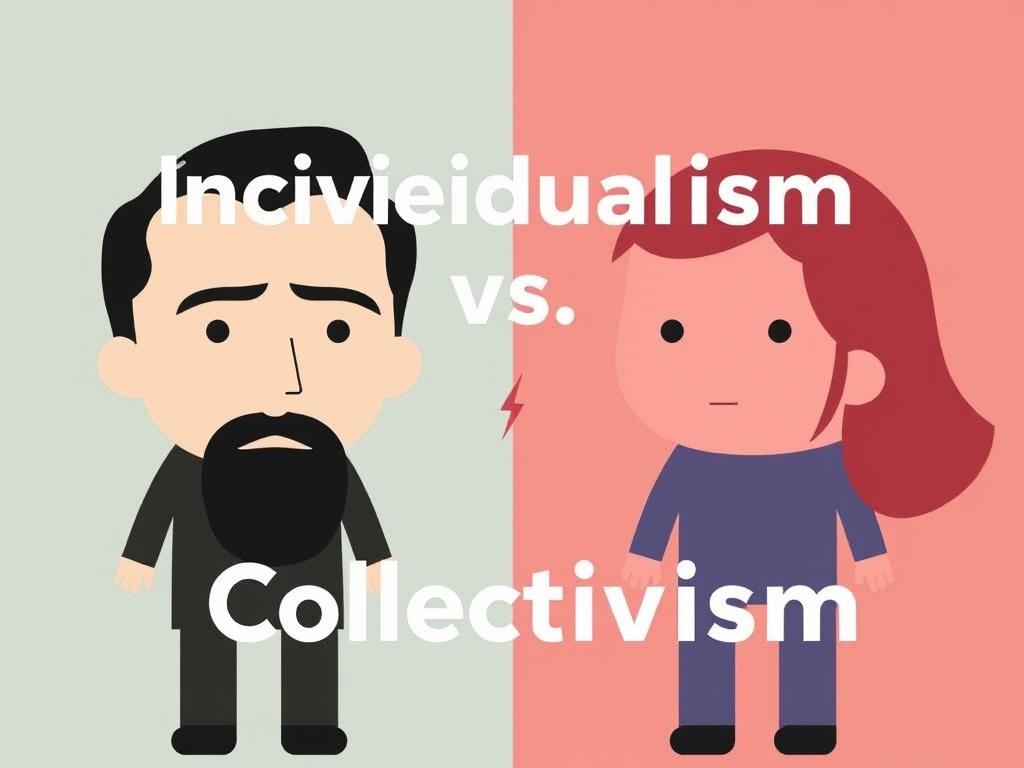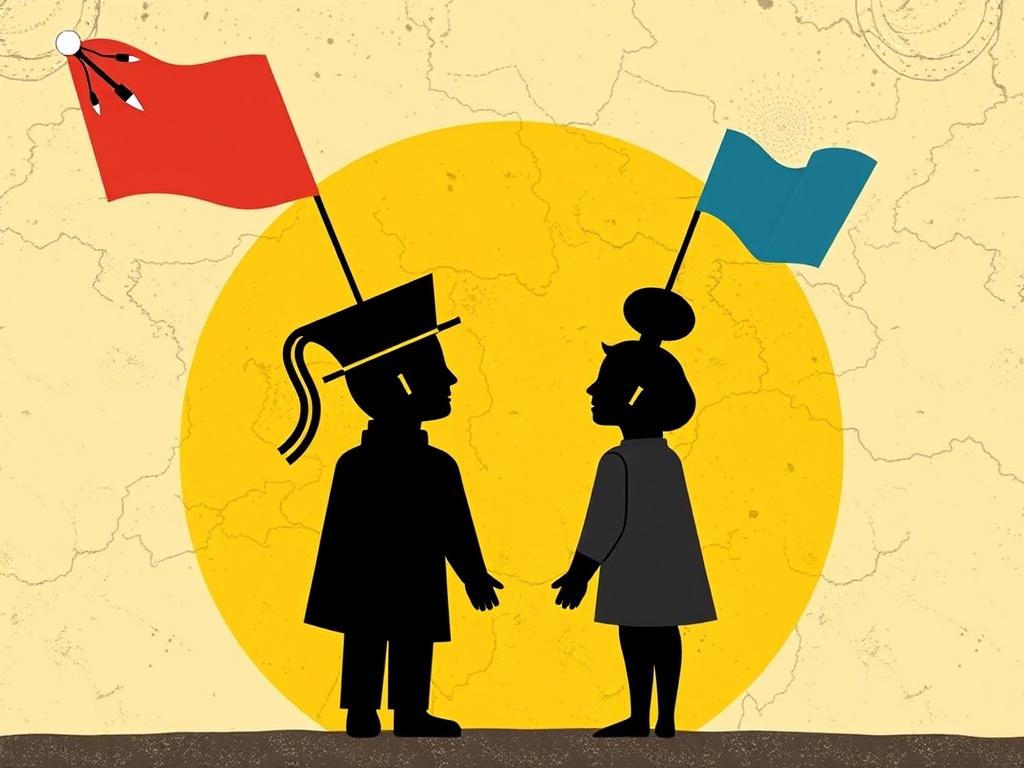What Is Individualism?
Individualism is a cultural and social philosophy that emphasizes the importance of the individual over the group. It celebrates personal freedom, self-reliance, and independence. In societies that prioritize individualism, people are encouraged to pursue their own interests, goals, and happiness. They are often seen as unique entities with distinct rights and desires that should be respected. This mindset supports the idea that personal achievement and individual rights are fundamental to a thriving community.
At its core, individualism places a premium on personal responsibility. People are expected to make their own decisions, face the consequences, and chart their paths without undue interference. This concept thrives in environments where innovation, creativity, and personal expression are valued. Consider countries like the United States, where the cultural narrative often revolves around the «self-made» person who rises above challenges through hard work and determination. This emphasis shapes laws, social policies, and educational systems that encourage autonomy.
What Is Collectivism?
In contrast, collectivism centers on the group rather than the individual. It’s a social philosophy where people value loyalty, unity, and harmony within a community, family, or society. The collective’s needs, goals, and values take precedence over an individual’s desires. In collectivist cultures, the well-being of the group is the ultimate priority, and people are often taught to subordinate their personal ambition for the greater good.
Collectivism is foundational in many parts of the world, including East Asian cultures like China and Japan, as well as numerous indigenous communities globally. These societies focus on cooperation, shared responsibilities, and mutual support. In collectivist settings, people typically make decisions based on how those choices affect their family, group, or nation. This approach nurtures strong social bonds and a sense of belonging, encouraging individuals to work together toward common goals.
The Basics of Individualism vs. Collectivism

Core Differences
Both individualism and collectivism offer valuable perspectives on how humans interact within society. Understanding their core differences helps clarify why some cultures, organizations, or communities lean more toward one philosophy:
| Aspect | Individualism | Collectivism |
|---|---|---|
| Focus | The individual’s rights and needs | The group’s welfare and harmony |
| Decision Making | Personal choice and freedom | Consensus and group interest |
| Social Responsibility | Self-responsibility and accountability | Shared duty and mutual support |
| Success Measurement | Personal achievements and ambitions | Group accomplishments and cohesion |
| Conflict Approach | Direct and confrontational | Avoidance and harmony preservation |
Individualism and Collectivism in Everyday Life
The debate between individualism vs. collectivism is not just academic—it plays out in everyday interactions, family dynamics, workplaces, and governments. For example, an individualistic person might prioritize their career aspirations even if it means relocating away from family. Meanwhile, someone with a collectivist mindset may choose to stay close, considering the needs and support of relatives as more important.
In schools, individualism may be fostered through encouragement of independent thought and self-expression, while collectivism might be promoted via group projects that emphasize collaboration. Similarly, in workplaces, cultures leaning towards individualism might reward personal initiative, while those favoring collectivism promote teamwork and group achievements.
The Influence of Culture on Individualism and Collectivism
Different cultures worldwide exhibit varying degrees of individualism vs. collectivism, influenced by historical, economic, and social factors. For instance, Western societies often celebrate liberal democracy and market economies that encourage personal choice and competition, hallmarks of individualistic thinking. On the other hand, many Asian, African, and Latin American societies promote values tied to family honor, social connectedness, and collective wellbeing.
It’s important to remember that no culture is purely individualistic or collectivist; these tendencies exist on a spectrum. Many societies blend elements of both philosophies, adapting to circumstances, generational shifts, and global influences.
Examples of Individualistic Cultures
- United States: Stress on personal liberty, entrepreneurship, and self-expression.
- Australia: Culture of independence and equality among citizens.
- Canada: Celebrates multiculturalism while emphasizing individual rights.
Examples of Collectivist Cultures
- Japan: Strong emphasis on group harmony, social roles, and consensus.
- China: Family and community interests frequently outweigh individual preferences.
- India: Extended family ties and communal values are prioritized.
Psychological and Social Implications of Individualism vs. Collectivism
The way societies lean toward individualism or collectivism can shape not only social structures but also individuals’ psychological well-being and interpersonal relationships. For example, individualism can promote self-confidence, personal growth, and the freedom to innovate. However, it may also lead to feelings of isolation, loneliness, or social fragmentation when taken to an extreme.
Collectivism fosters strong community ties, loyalty, and support networks, buffering against social stress. Conversely, it might suppress individual desires and creativity, potentially causing internal conflict if a person’s needs don’t align perfectly with the group.
How These Perspectives Affect Communication
Communication styles often reflect whether a culture leans individualistic or collectivist. Individualistic cultures tend to value direct, explicit, and assertive communication. People express opinions openly, prioritizing truth and clarity even at the risk of confrontation. Collectivist cultures, conversely, frequently employ indirect communication methods, using context, non-verbal cues, and subtlety to maintain social harmony and avoid embarrassment or conflict.
Application: Individualism vs. Collectivism in the Workplace
Understanding individualism vs. collectivism is critical in the global business environment. Multinational companies that operate across different cultures face unique challenges when aligning their management styles and team dynamics.
In individualistic cultures, employees might expect recognition for personal accomplishments, encourage self-promotion, and prefer autonomy in decision-making. In collectivist cultures, workers may emphasize group consensus, shared rewards, and team loyalty. Managers should adapt their approaches accordingly:
| Workplace Aspect | Individualistic Environment | Collectivist Environment |
|---|---|---|
| Motivation | Personal goals and rewards | Group success and recognition |
| Conflict Resolution | Open discussion and direct feedback | Indirect approach, aiming for harmony |
| Leadership Style | Autonomous and individual-focused | Participative and group-focused |
| Decision Making | Individual authority | Consensus building |
| Performance Evaluation | Individual achievements | Team outcomes |
Challenges and Misunderstandings Between Individualistic and Collectivist Perspectives
When people from individualistic and collectivist cultures interact, misunderstandings can arise easily. For example, a collectivist might perceive an individualistic person as selfish or uncaring because they prioritize personal needs. In contrast, someone from an individualistic background may view collectivist behavior as suppressive or conformist.
Recognizing these differences is crucial for fostering mutual respect and effective communication, especially in multicultural friendships, workplaces, or diplomatic relations. Simple gestures such as active listening, patience, and asking open questions can reduce tensions rooted in these deep cultural divergences.
How Education Reflects Individualism and Collectivism
Schools and educational systems often mirror their culture’s stance on individualism and collectivism. In systems influenced by individualistic values, students are encouraged to think critically, question authority, and express unique perspectives. Academic success is framed as a personal accomplishment, and competition among students is common.
Conversely, collectivist-based education stresses the importance of group projects, respect for traditions and authority, and the collective success of the class or school community. Cooperation, discipline, and harmony are essential lessons learned alongside academic content. Both approaches have their strengths and weaknesses in preparing students for the modern world.
Educational Practices by Culture
- Individualistic: Encouraging debate, personal projects, and self-assessment.
- Collectivist: Emphasizing teamwork, memorization, and respect for elders/teachers.
Balancing Individualism and Collectivism in Modern Society

While individualism vs. collectivism might seem like an either/or proposition, the healthiest societies often find a balance between the two. Modern life demands personal freedom and innovation as well as community cohesion and mutual support. The challenge lies in recognizing when to prioritize individual rights and when to promote collective responsibility.
For example, public health initiatives, environmental protection, and social welfare programs benefit greatly from a collectivist approach. They rely on community cooperation and shared sacrifice. On the other hand, protecting personal privacy, encouraging creativity, and supporting entrepreneurial ventures are more aligned with individualistic ideals.
Practical Ways to Foster Balance
- Encouraging open dialogue that respects both individual opinions and group consensus.
- Developing policies that protect personal freedoms while promoting social welfare.
- Creating workplace cultures that value teamwork but recognize individual contributions.
- Supporting education systems that foster critical thinking while teaching empathy and cooperation.
Individualism vs. Collectivism in the Age of Globalization

Globalization has brought diverse cultures into more frequent contact than ever before. This constant interaction often highlights the contrasts between individualism and collectivism, but it also presents opportunities for cross-cultural understanding and cooperation.
Technology allows people across the world to share ideas and values quickly, sometimes challenging traditional norms. Younger generations especially might blend individualistic and collectivist values into new hybrid identities that reflect their globalized experience. This evolution has the potential to redefine how societies think about self and community.
The Role of Social Media
Social media platforms embody a fascinating mix of individualistic and collectivist tendencies. They offer spaces for personal branding, self-expression, and individual acknowledgment, quintessential individualist features. Yet, social media also fosters communities, group identities, and collective movements—hallmarks of collectivism. This dual nature means that understanding individualism vs. collectivism is essential for navigating digital interactions wisely.
Summary Table: Contrasting Characteristics of Individualism and Collectivism
| Dimension | Individualism | Collectivism |
|---|---|---|
| Primary Unit of Society | Individual | Group / Community |
| Identity | Self-defined and independent | Defined by social roles and relationships |
| Social Obligations | Voluntary and selective | Strong and obligatory |
| Self-Concept | Emphasizes autonomy and uniqueness | Emphasizes connectedness and harmony |
| Approach to Rules | Rules can be challenged | Conformity to rules |
Conclusion
The tension between individualism vs. collectivism is a fundamental part of how humans organize themselves and make sense of their lives. Each perspective offers distinct benefits and drawbacks, shaping cultures, relationships, workplaces, education, and politics worldwide. Rather than viewing them as opposites in competition, it’s more productive to appreciate how individualism and collectivism complement each other and address different human needs. Finding the right balance enables societies to foster both personal freedom and social responsibility, creating more inclusive, resilient, and harmonious communities. By understanding and respecting these cultural orientations, we can navigate our increasingly interconnected world with empathy and insight, appreciating the unique contributions of both the individual and the collective.




















